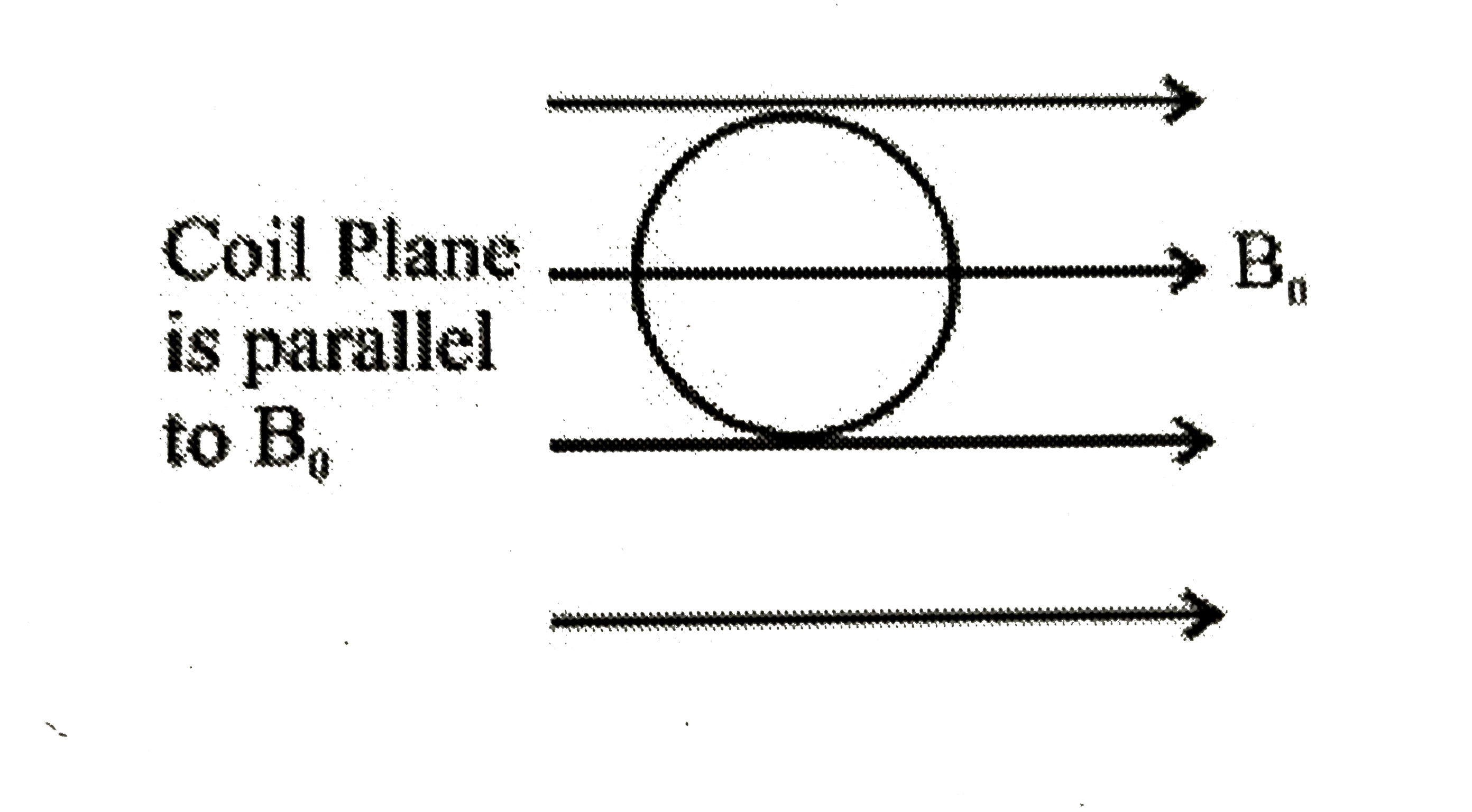Case 1: Number of field lines through an area decreases from 100 to 99 in 10 seconds
Case II: Number of field lines through an area decreases from 10 to 0 in 1 second In which case will the induced emf be higher?
Case I
Case II
Same in both
Data insufficient
The correct Answer is:B
To determine in which case the induced electromotive force (emf) is higher, we can use Faraday's law of electromagnetic induction. According to Faraday's law, the induced emf (ε) is given by the rate of change of magnetic flux (Φ) through a circuit:
ε=−dΦdt
Where:
- ε is the induced emf,
- dΦ is the change in magnetic flux,
- dt is the time interval over which the change occurs.
Step 1: Calculate the change in magnetic flux for both cases.
Case 1:
- Initial number of field lines = 100
- Final number of field lines = 99
- Change in field lines (dΦ) = 99 - 100 = -1
- Time interval (dt) = 10 seconds
Case 2:
- Initial number of field lines = 10
- Final number of field lines = 0
- Change in field lines (dΦ) = 0 - 10 = -10
- Time interval (dt) = 1 second
Step 2: Calculate the induced emf for both cases.
Induced emf for Case 1:
ε1=−dΦdt=−−110=110 V
Induced emf for Case 2:
ε2=−dΦdt=−−101=10 V
Step 3: Compare the induced emf values.
From the calculations:
- Induced emf in Case 1 (ε1) = 0.1 V
- Induced emf in Case 2 (ε2) = 10 V
Conclusion:
The induced emf is higher in Case 2.
- ε is the induced emf,
- dΦ is the change in magnetic flux,
- dt is the time interval over which the change occurs.
- Initial number of field lines = 100
- Final number of field lines = 99
- Change in field lines (dΦ) = 99 - 100 = -1
- Time interval (dt) = 10 seconds
- Initial number of field lines = 10
- Final number of field lines = 0
- Change in field lines (dΦ) = 0 - 10 = -10
- Time interval (dt) = 1 second
ε1=−dΦdt=−−110=110 V
ε2=−dΦdt=−−101=10 V
- Induced emf in Case 1 (ε1) = 0.1 V
- Induced emf in Case 2 (ε2) = 10 V
The induced emf is higher in Case 2.
Topper's Solved these Questions
- ELECTROMAGNETIC INDUCTION BOOK - CENGAGE PHYSICSCHAPTER - ELECTROMAGNETIC INDUCTION EXERCISE - MANDATORY EXERCISE (EXERCISE SET IV)
1 Video
- ELECTROMAGNETIC INDUCTION BOOK - CENGAGE PHYSICSCHAPTER - ELECTROMAGNETIC INDUCTION EXERCISE - CHALLENGING EXERCISE
3 Videos
- ELECTROMAGNETIC INDUCTION BOOK - CENGAGE PHYSICSCHAPTER - ELECTROMAGNETIC INDUCTION EXERCISE - MANDATORY EXERCISE (EXERCISE SET II)
21 Videos
- CURRENT ELECTRICITYBOOK - CENGAGE PHYSICSCHAPTER - CURRENT ELECTRICITYEXERCISE - OLYMPIAD AND NTSE LEVEL EXERCISES
10 Videos
- ELECTROMAGNETIC SPECTRUM AND RADIATIONSBOOK - CENGAGE PHYSICSCHAPTER - ELECTROMAGNETIC SPECTRUM AND RADIATIONSEXERCISE - Olympiad And NTSE Level Exercises
10 Videos
Similar Questions
Knowledge Check
The inductance of a coil is 60μH. A current in this coil increase from 1.0A to 1.5A in 0.1 second. The magnitude of the induced e.m.f. is
A60×106(−60VB300×10−4VC30×10−4VD3×10−4VThe number of electric field lines crossing an area ΔSisn1whenΔ→S∣∣→E, while the number of field lines crossing the same area is n2 when Δ→E makes an angles of 30∘ with →E. Then
An1=n2Bn1>n2Cn1ltn2Dcannot say anythingA physical was performing experiments to study the velociyt and wavelength of the electron. In one case, the electron was accelerated through a potential differences of 1 KV and in second case it was accelerated through a potential difference of 2KV.
In order to have half the velocity in the second case than in the first case, the potential applied should beA0.5 KVB2 KVC0.25 KVD0.75 KV
A coil having area A0 is placed in a magnetic field which changes from B0 to 4B0 in 't' seconds, as shown in the figure. The induced emf will be :-

View Solution(a) Calculate the self-inductance of a solenoid that is tightly wound with wire of diameter 0.10cm, has a cross-sectional area 0.90cm2 and is 40cm long
(b) If the current through the solenoid decreases uniformly from 10 A to 0A in 0.10s, what is the emf induced between the ends of the solenoid?
View SolutionA small conducting circular ring of area 2 mm2 is placed coplanerly with a long straight current carrying wire at a distance of 10 cm from it. It current through the wire decreases from 4 A to zero in 0.1s, the average value of emf induced in the ring.
View SolutionA physicist was performing experiments to study the effect of varying voltage on the velocity and wavelength of the electrons. In one case, the electron was accelerated through a potential difference of 1kV and in the second case, it was accelerated through a potential difference of 2kV
In order to have half the velocity in the second case than in the first case, the potential applied should be
View SolutionThe current in a coil decreases from 1 A to 0.2 A. In 10 sec. Calculate the coefficient of self inductance. If induced emf is 0.4 volt .
View Solution
